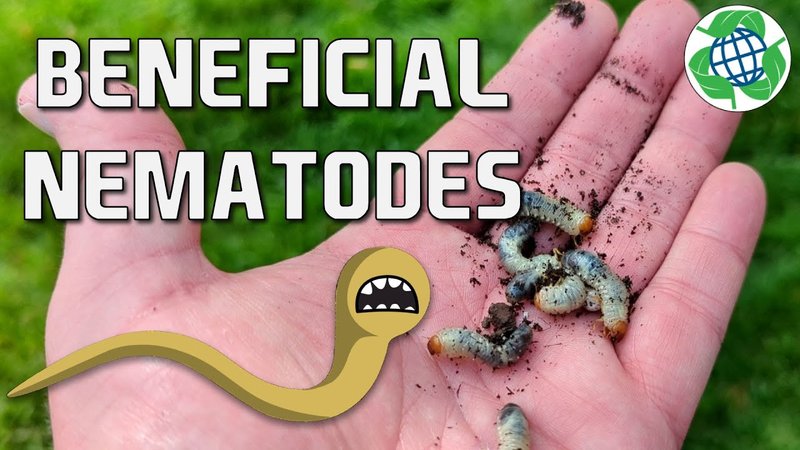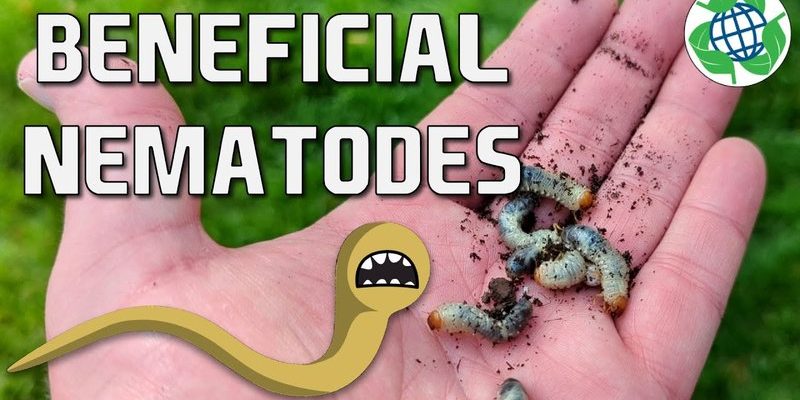
Think of hammerhead worms as the pesky villains in your gardening saga. They can damage your plants by preying on earthworms and other beneficial organisms. But like a good plot twist, beneficial nematodes come to the rescue! These tiny creatures, often measured in fractions of an inch, can seek out and destroy harmful pests, including hammerhead worms. Let’s explore how these nematodes work and why they might be the best solution for your garden troubles.
What Are Hammerhead Worms?
Hammerhead worms, scientifically known as **Bipalium**, are quite an odd sight. They have a flat, elongated body with a unique, hammer-like shape at one end. You might spot them slinking across your garden at night or after rain, which is when they come out to hunt. These worms primarily feed on earthworms and other soil dwellers, disrupting the soil ecosystem and harming your garden’s health.
It’s essential to understand why these worms are a problem. While they don’t directly harm plants, their predation can lead to a decline in the earthworm population. Earthworms are like nature’s composters: they aerate the soil and break down organic matter, helping your plants grow strong. Losing them could mean less fertile soil and weaker plants, so dealing with hammerhead worms is crucial.
You might be wondering how to identify these critters. They vary in color, usually from brown to gray, and can grow up to a foot long! If you find one in your garden, it’s a sign that you may need to take action. Luckily, that’s where beneficial nematodes come in.
What Are Beneficial Nematodes?
Beneficial nematodes are microscopic worms that can benefit your garden. They belong to the genus **Steinernema** and **Heterorhabditis**. While they’re tiny—often just a few millimeters long—they pack a punch when it comes to pest control. These nematodes are natural predators of many garden pests, including hammerhead worms.
How do they work? Beneficial nematodes enter the bodies of pests, releasing bacteria that kill them in just a few days. Once they finish their meal, the nematodes reproduce and continue searching for more pests. It’s like setting a tiny army to work on your behalf, tackling harmful worms while leaving beneficial soil organisms intact.
These nematodes are safe for humans, pets, and other wildlife, making them an eco-friendly solution for pest control. You can find them at garden centers or online, often packaged in a way that makes them easy to use in your garden.
How to Apply Beneficial Nematodes
Applying beneficial nematodes is a straightforward process. Here’s a step-by-step guide to help you get started:
- Choose the right time: The best time to apply nematodes is during the evening or on cloudy days. This helps protect them from UV rays and ensures they settle into the soil effectively.
- Prepare your garden: Before application, moisten the soil with water. This will help the nematodes move through the soil and reach their target pests more easily.
- Mix and apply: Follow the package instructions to mix the nematodes with water. Use a spray bottle or garden sprayer to distribute them evenly across affected areas.
- Water regularly: After applying, keep the soil moist for a week or two to ensure the nematodes establish themselves in your garden environment.
By following these steps, you’re giving beneficial nematodes the best chance to work their pest-fighting magic. It’s almost like putting out a welcome mat for these helpful little guys!
Effectiveness Against Hammerhead Worms
You might be wondering how effective beneficial nematodes are against hammerhead worms. Research shows that they can significantly reduce worm populations. But, like any natural method, results can vary based on several factors, including soil type and moisture levels.
These nematodes are particularly effective in moist, well-aerated soils. The closer they can get to hammerhead worms, the better they’ll perform. That said, patience is essential. It may take a few weeks to see a noticeable reduction in hammerhead worm numbers.
Additionally, beneficial nematodes can tackle other garden pests, such as cutworms and grubs, meaning you’re not just solving one problem, but creating a multi-faceted defense against various pests.
Why Choose Beneficial Nematodes Over Chemicals?
When it comes to pest control, you might be tempted to reach for chemical pesticides. However, here’s the thing: chemicals can disrupt the entire ecosystem in your garden. They kill not only the bad pests but also the good ones, like earthworms and beneficial insects. This can lead to more significant problems down the line, such as soil degradation and a lack of biodiversity.
On the other hand, beneficial nematodes target specific pests without harming the rest of your garden’s inhabitants. They help keep the ecosystem balanced, maintaining healthy soil and promoting healthy plant growth. Plus, they’re a safe option for families and pets—no harsh chemicals involved.
Choosing beneficial nematodes isn’t just good for your garden; it’s also a step toward more sustainable gardening practices. You’ll contribute to a healthier environment while still getting the results you want.
Where to Buy Beneficial Nematodes
If you’ve decided to give beneficial nematodes a try, you’re probably wondering where to find them. You can typically purchase them at garden centers or online retailers. Look for reputable brands that provide clear instructions and information about the specific nematode species contained in the package.
Many brands offer nematodes packaged in a way that makes application simple. For example, they may come in a concentrated form to mix with water, making it easy to apply right where you need it. Just be sure to check reviews or do a little research to find a trusted source.
Keep an eye out for seasonal sales, too. Some retailers offer discounts during spring planting season, which is a great time to stock up on these beneficial allies for your garden.
Final Thoughts on Beneficial Nematodes and Hammerhead Worms
Using beneficial nematodes to suppress hammerhead worms can be a game-changer in your gardening journey. These tiny but mighty creatures allow you to tackle pesky garden pests while keeping your garden’s ecosystem healthy and balanced.
By understanding how to identify hammerhead worms, applying beneficial nematodes properly, and opting for a more natural approach to pest control, you’re not only safeguarding your plants but also promoting an environment where beneficial organisms can thrive.
So, if a hammerhead worm tries to crash your garden party, remember that beneficial nematodes are ready to step in as your garden’s heroes. Give them a try, and you’ll likely be amazed at the change in your garden’s health!

